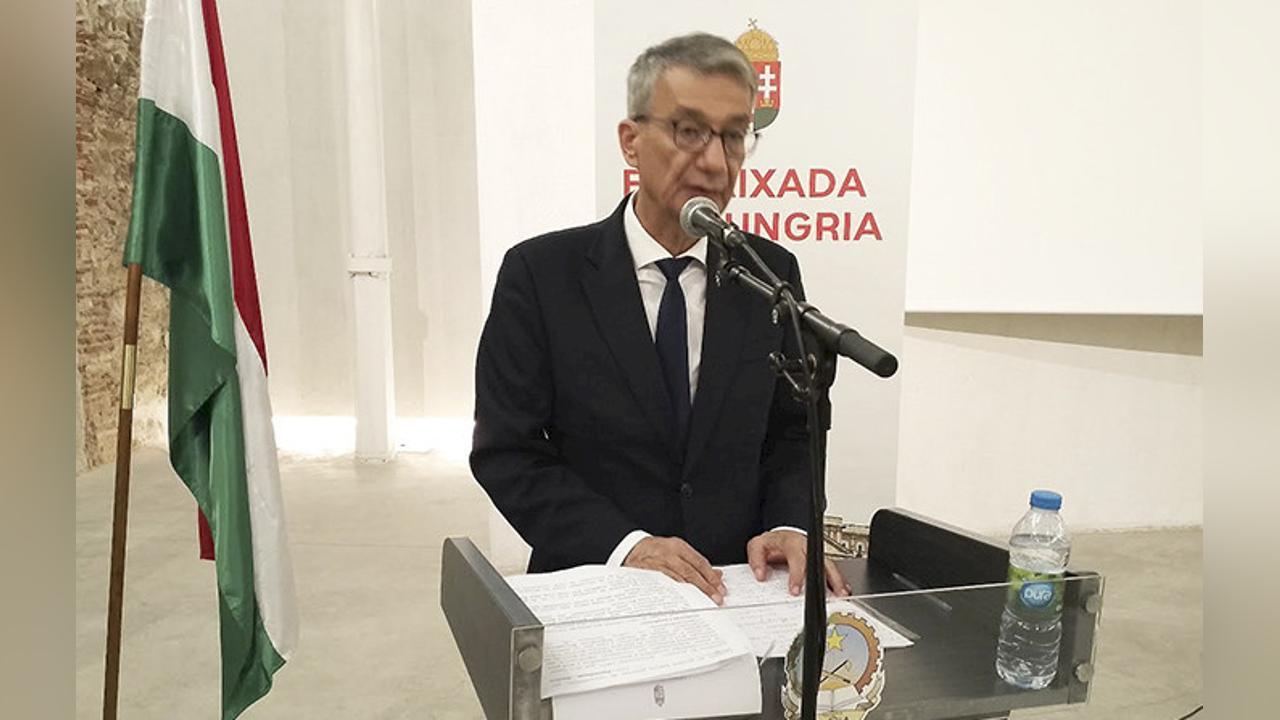Africa-Press – Angola. Hungary’s ambassador extraordinary and plenipotentiary to Angola, Zsolt Maris, announced his intention to produce a feature-length film about the travels of the Hungarian explorer László Magyar in the central region of Angola, in the years 1848-1857.
Hungarian geographical explorer, László Magyar (1818-1864), whom Africans called by the name “Enganna Komo”, was born in the city of Szombathely (Hungary).
He disembarked in Benguela on December 9, 1848, from where he traveled to Bié in January 1849, where he married Ina Kullu Ozoro, one of the daughters of King Kajaja-Kajangula.
During his expedition to explore territories in the interior of Angola, László Magyar made trips to the sources of the Kwanza River, the Kamba and Kwanyama empires, the regions of the Kunene and Kubango rivers and the Lunda and Lobal kingdoms.
Speaking in Benguela, as part of a traveling exhibition to celebrate the 205th anniversary of László Magyar’s birth, diplomat Zsolt Maris hinted that, Hungary values the contribution of this explorer as an important link between peoples, countries and cultures.
According to the ambassador, for decades, László Magyar was misunderstood and there were also reservations regarding the territories in the interior of Angola covered on his trips.
Hence this exhibition, as he explained, seeks to clear this image and terrible opinions about the explorer and revisit his travels, especially in the Bié Plateau.
He made it known that the Hungarian Embassy will work with Public Television of Angola (TPA), with a view to producing the feature film with Angolans, to portray the adventurous life of László Magyar.
Furthermore, he said that the intention is to produce a series of documentaries that explore the places where László Magyar passed during his expedition in Angola, as a way of showing the world the beauty and riches of the country.
Published work
A synthesis of László Magyar’s work was recently published in Portugal, entitled “O Planalto do Bié – Travel Diaries of László Magyar (1848-1857).
It is in this context that the ambassador suggests that Angola acquire the publishing rights for this work, published in Portuguese, guaranteeing support for its distribution among the country’s provincial libraries.
He also suggested that it would be a pleasure to present to the public, at the National Museum of Archeology in Benguela, a piece about the marriage of László Magyar with a princess from Bié, on May 23, 1849.
On the other hand, he highlighted that ornithologists from both countries are working on a project to study migratory birds, called “Blue Falcon”, which spend the summer in Hungary and the winter in the province of Huambo.
“These migratory birds were described for the first time in László Magyar’s diary”, he added, reinforcing that Hungarian and Angolan scientists began researching these birds in both Hungary and Angola.
However, for the ambassador, the most important project must be a complete translation into Portuguese of László Magyar’s diary and delivering it to the libraries of Angola’s 18 provinces.
Diplomat Zsolt Maris said he would like to continue showing this traveling exhibition about the life and work of László Magyar in Angola in the coming years.
Before beginning to explore Southern Africa in 1848, László Magyar served, between 1843-1845, on different commercial ships, passing through the most important ports from South America to the Far East.
In 1845, he accepted a military post in the Argentine Navy and participated in the war against Uruguay, where he was taken prisoner and sentenced to death, a sentence that was later commuted and pardoned.
László Magyar died in 1864, in Cuio, in the province of Benguela, but this news only reached Hungary four years later.
For this reason, the Embassy of Hungary and the Ministry of Culture of Angola inaugurated on Tuesday, in the city of Benguela, a plaque in memory of the Hungarian explorer László Magyar.
The plaque posted between the National Archeology Museum and the Benguela Government headquarters reads as follows: “His journeys from the Zaire River to Cunene, his works of great scientific value and his life shared with Princess Ozoro do Bié were the beginning of a long friendship”.
For More News And Analysis About Angola Follow Africa-Press






